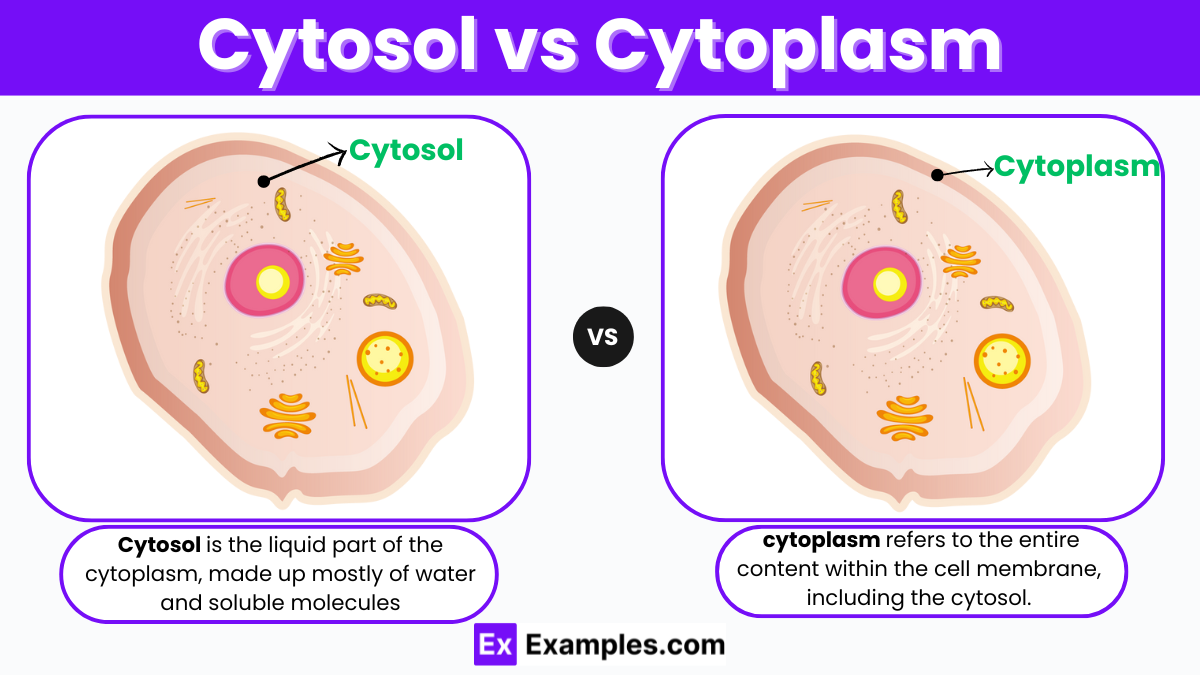What is the primary difference between cytosol and cytoplasm?
Cytosol includes organelles, while cytoplasm does not.
Cytoplasm includes cytosol and organelles, while cytosol is the fluid component only.
Cytosol is found only in plant cells, while cytoplasm is found in animal cells.
Cytosol contains DNA, while cytoplasm does not.




